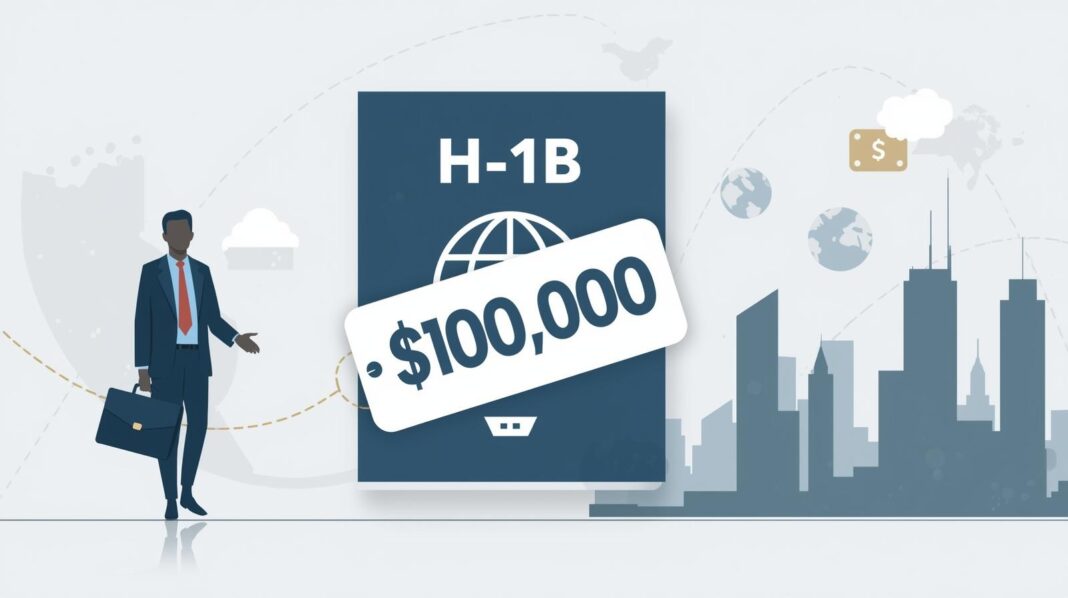The H-1B visa, long regarded as the gateway for skilled foreign professionals to work in the United States, is facing a seismic change.
President Donald Trump has signed a proclamation imposing a $100,000 annual fee on H-1B visas, a move that has sent shockwaves through global tech industries, immigration advocates, and international trade partners—particularly India.
What Is the H-1B Visa?
The H-1B visa is a non-immigrant visa that allows U.S. employers to hire foreign workers in specialty occupations requiring theoretical or technical expertise. Fields like information technology, engineering, finance, and healthcare have traditionally relied on H-1B holders.
-
Each year, the U.S. issues 85,000 H-1B visas, with the majority going to Indian and Chinese professionals.
-
Tech giants such as Google, Amazon, Microsoft, and Meta are among the biggest sponsors of H-1B visas.
The New $100,000 Fee Explained
Previously, companies paid various processing and filing fees that ranged from $1,500 to around $6,000 per visa application. Trump’s new order introduces a flat $100,000 annual fee per visa, creating an unprecedented cost burden.
Key Points:
-
Applies Annually: The fee isn’t just a one-time cost; it recurs every year the visa is active.
-
Applies Per Worker: Employers must pay $100,000 for each H-1B worker on their payroll.
-
Effective Timeline: The proclamation is expected to take effect within the next fiscal year, though implementation details are still being finalized.
Impact on Foreign Workers
For many skilled professionals—especially from India—this development raises significant concerns:
-
Reduced Opportunities: Employers may hesitate to hire foreign workers if the cost becomes too steep.
-
Visa Accessibility: Smaller firms and startups, which previously relied on H-1B workers, may be priced out.
-
Career Shifts: Workers may look toward countries with more favorable immigration policies, such as Canada, Australia, or the U.K.
Impact on U.S. Employers
The fee will disproportionately affect U.S. tech companies that rely heavily on H-1B workers to fill talent gaps.
-
Cost Burden: A company with 1,000 H-1B workers could face an additional $100 million annually in costs.
-
Talent Shortages: Employers may struggle to find equivalent skills locally, especially in AI, data science, and advanced engineering.
-
Competitive Disadvantage: U.S. companies may lose ground to global competitors in innovation if they can’t access top international talent.
The India Trade Angle
India, which accounts for nearly 70% of H-1B visa holders, has expressed strong concerns.
The country’s leading trade body has called the move “concerning” for U.S.-India economic relations.
Outsourcing firms and Indian IT service providers, which supply talent to U.S. companies, could be hit particularly hard.
What Happens Next?
-
Legal Challenges Likely: Immigration advocates and business groups may challenge the proclamation in court.
-
Congressional Debate: Lawmakers may push back, arguing the policy hurts the U.S. economy.
-
Global Talent Shift: Other nations could seize the opportunity to attract skilled workers who might otherwise have gone to the U.S.
FAQs
1. How much did an H-1B visa cost before this change?
Previously, fees ranged from $1,500 to $6,000 depending on the size of the employer and processing type.
2. Who pays the H-1B visa fees?
Employers are responsible for covering the majority of fees, not the employee.
3. When will the $100,000 fee be implemented?
The policy is expected to roll out within the next fiscal year, though exact dates remain uncertain.
4. Which industries will be most affected?
Tech, healthcare, and finance—sectors that heavily rely on specialized foreign talent—will face the greatest impact.
Final Thoughts
Trump’s $100,000 H-1B visa fee marks one of the most dramatic overhauls in U.S. immigration policy for skilled workers in decades.
While it may align with the administration’s goal of prioritizing American jobs, critics argue it risks weakening U.S. competitiveness, straining trade relations, and driving talent elsewhere.
As the policy moves toward implementation, both foreign workers and U.S. employers face an uncertain future in the evolving landscape of global labor mobility.
Also Read
Mango Airlines Rescue Plan Collapses as Investor Pulls Out
Goodbye America? Inside the Report Revealing Where 116,000 Americans Plan to Move

